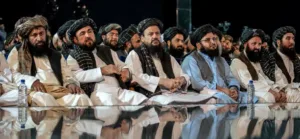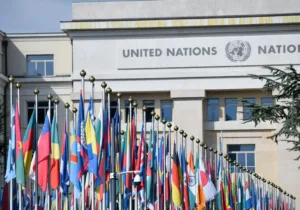As the United States withdraws troops from Afghanistan, many are remembering what life under the Taliban was like and considering what it might look like soon. Assuming the Taliban will capitalize on its battlefield advantage, militant groups such as them and ISIS-K (Islamic State-Khorasan) will enjoy more space to plan and mount attacks, leading to greater levels of religious-targeted violence and persecution.
In a recent conversation led by the US Commission on International Religious Freedom (USCIRF) on the exodus of religious minority communities in Afghanistan, various scholars and leaders spoke on the current and anticipated plight of such groups, especially the Sikh and Hindu communities. Both are near extinction in that region, and their steady decline continues to play into the hands of extremists. The Afghan government assumes that these minority groups will eventually leave and, therefore, do not feel compelled to address equality and security issues concerning them. The government’s lack of engagement in this arena thus makes it easier for extremist groups like ISIS-K and the Taliban to persist in their attacks. Other groups who face religious discrimination and persecution include Christian converts, the Baháʼí community, Hazara, and Shi’a Muslims.
Moderated by Dwight Bashir, director of outreach and policy at USCIRF, the virtual event began with an assessment of religious freedom conditions in Afghanistan. USCIRF Chair Nadine Maenza articulated how the 2021 USCIRF annual report recommended that the US Department of State place Afghanistan on the special watchlist and continue to designate the Taliban as an entity of particular concern (EPC).
More specifically, USCIRF Commissioner Fred Davie brought to attention the story of a temple in Jalalabad that has been around for 929 years. As a documentary shared during the event shows, only four or five Hindu households were left at the time of filming; everyone else had emigrated to London or other places. The few who remained struggled to maintain the temple without support. Distressingly, the children of these households were illiterate, and as such their future was expected to be bleak.
Jagbir Jhutti-Johal, a member on the UK Freedom of Religion and Belief Forum, explained how Hindus and Sikhs are routinely identified with India. Those found in Afghanistan are deemed foreign migrants, even if they have been native to Afghanistan, and “align themselves with Guru Nanak, the founder of the Sikh tradition during the course of the fifteenth century.” Instead, “in the last five decades, Sikhs and Hindus amongst other minorities have seen their non-Muslim religious identity result in religious violence and discrimination.” Examples of this included a religious tax (jizya) that non-Muslims must pay and a requirement to wear or carry a piece of yellow cloth in public. The Afghan religious minorities widely welcomed the overthrow of the Taliban regime, but to this day they “continue to attract hostile attention” of the Taliban and ISIS-K and must once again pay jizya.
Sikh men continue to suffer from verbal and physical abuse in public places due to their external identity, and Sikh and Hindu girls wear burqas in public or remain indoors to “remove themselves from the male gaze.” The gurdwaras—a final safe haven for Sikhs—are no longer places of refuge either, as ISIS-K has stormed these sacred sites, killing and injuring many.
Unfortunately, the government of Afghanistan is unlikely to address these equality and security issues for the Sikh and Hindu communities because they “know they will eventually leave.” Jagbir thus contends that the “repatriation of 250 Sikh and Hindu families needs to be considered because their safety cannot be guaranteed by the Afghan government.” Since India has its own share of problems with its treatment of religious minorities and welfare state, America needs to do more.
However, according to Michael Kugelman—deputy director of the Asia Program at the Wilson Center—the US has struggled to articulate its policy on Afghanistan as a whole. “The prioritization of human rights and minority rights in Afghanistan has never really been a top policy priority for the US.” In fact, after its withdrawal, the US will focus on maintaining a counter-terrorism capacity and diplomatic support for the peace process. While the administration will emphasize its continued commitment to promoting human development and human rights in Afghanistan, it does not give many specifics on who will be on the receiving end of the aid beyond “women and children.” Moreover, “it will be increasingly difficult to oversee” the distribution of such aid and assistance without any “US security presence in the country.”
Thus, a goal for the US would be to “generate enough attention around the plight of Sikhs and Hindus in Afghanistan, including by working with those on Capitol Hill, so that any future assistance packages to Afghanistan can specifically identify smaller religious minority communities as intended recipients.” Kugelman also recommends that the US should “threaten to curtail levels of future military assistance to Kabul if it cannot ensure that more is being done to provide protection, financial assistance, education, health resources, and so on to these marginalized communities, all in an effort to make these communities feel safer and less discriminated against.”
When discussing a possible power-sharing scenario where the Taliban is in power, the discussants highlight that this would be bad news for religious minorities. There is no indication that the Talban would “do a better job of supporting them,” making optimism difficult.
Eager to leave dangerous regions, many Sikh and Hindu communities flee to India or other countries, and yet they still face complexities there. India—while a more convenient option—is not necessarily the safest or best choice since discrimination and persecution run rampant there as well. While places like the United States could accept them as refugees, some like Kugelman do not see the US government doing this anytime soon for the Sikh and Hindu minorities of Afghanistan. “When it comes down to cold hard interest in politics,” he argues, this is not seen “as something viable from the perspective of what the US government could do.”
Therefore, these communities must rely upon the international community to step in and support the Afghan government so that it might prioritize the plight of religious minorities, even as it fights an insurgency and terrorism and struggles to survive.







 Live in the DC area? Sign-up for Providence's in-person events list!
Live in the DC area? Sign-up for Providence's in-person events list!